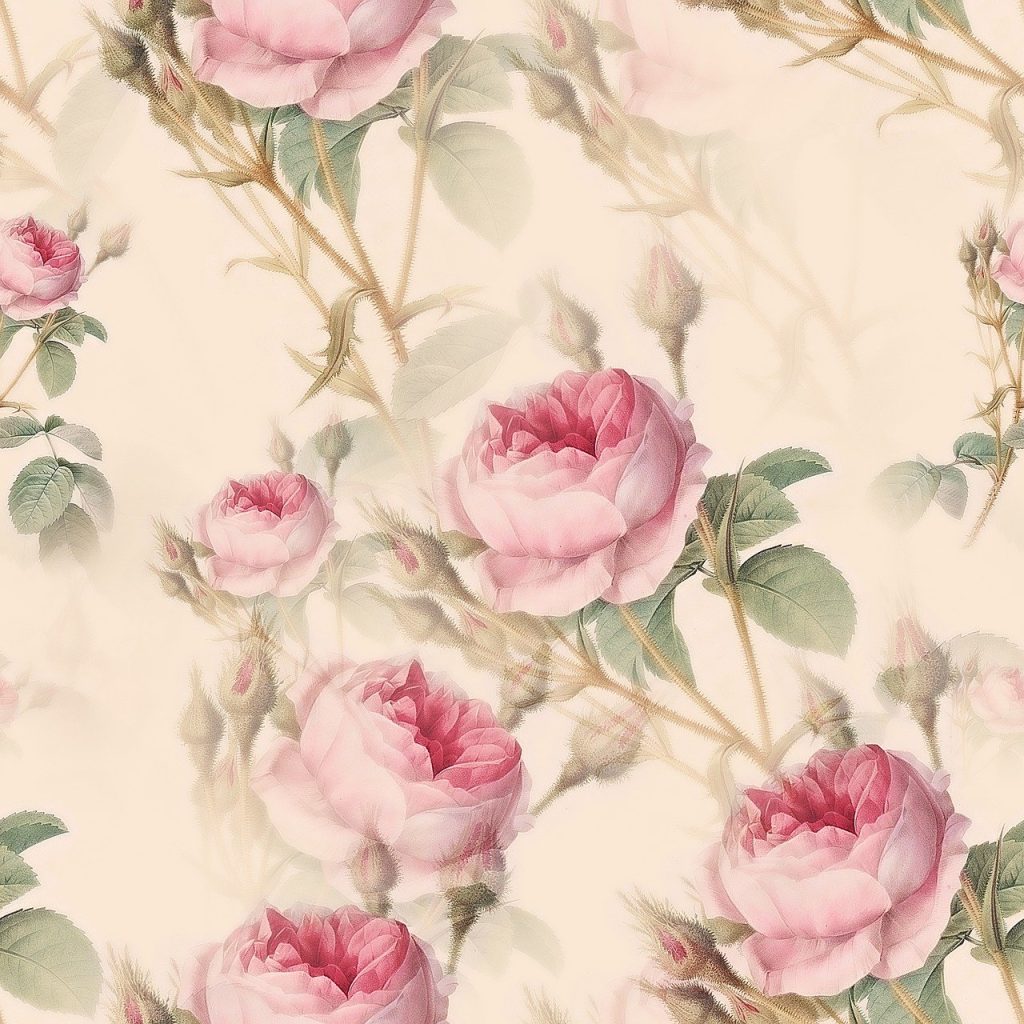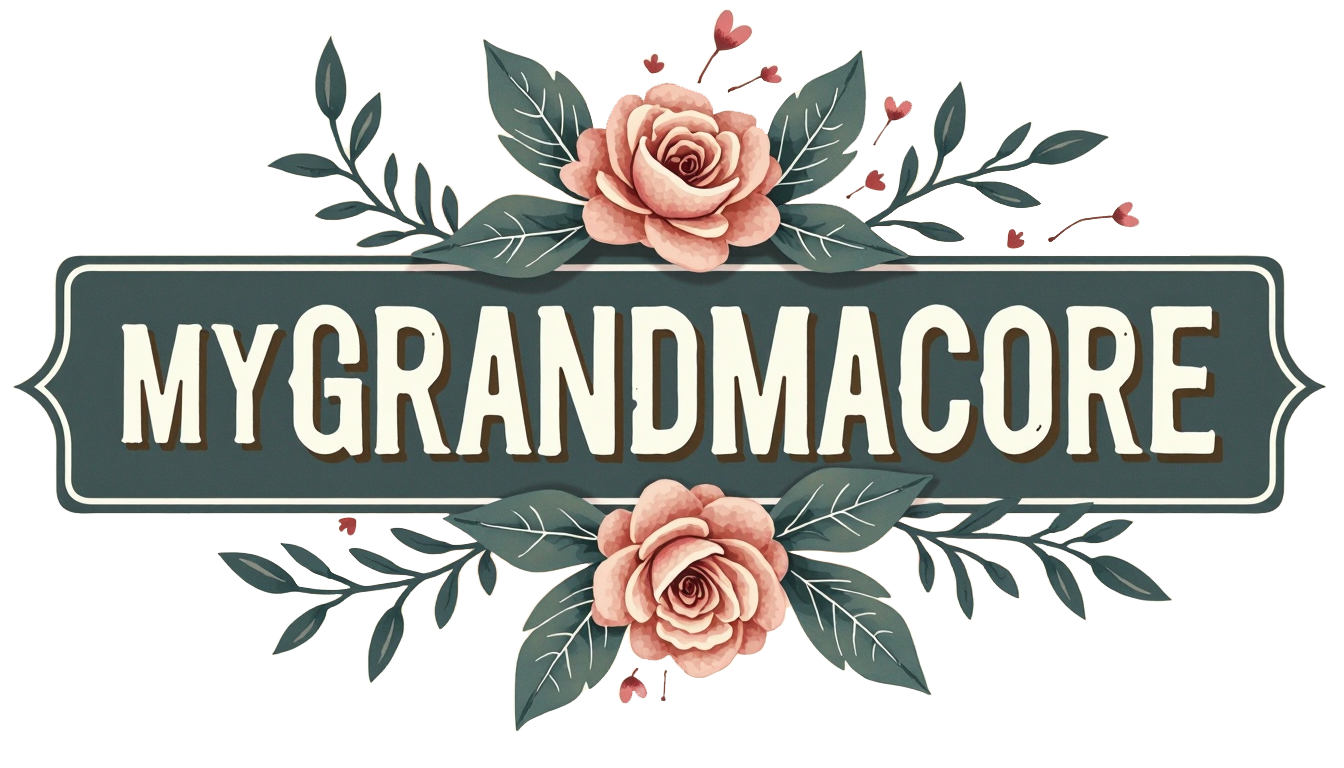Key Takeaways
- GrandmaCore design celebrates nostalgic, cozy aesthetics with vintage rose motifs as a central element
- Different rose patterns (cabbage, rambling, botanical, damask) create distinct GrandmaCore feelings
- Balance is crucial—mix pattern scales, incorporate solid colors, and create visual “breathing room”
- Start with one statement furniture piece and build your rose-themed design around it
- Budget-friendly options include thrift store finds, DIY projects, and printable public domain rose art
What Is GrandmaCore and Why Do Rose Motifs Matter?
Do you miss the warm, comfortable feeling of your grandmother’s living room? That nostalgic sensation has a name now: GrandmaCore. This design trend celebrates the cozy, slightly ornate aesthetic that many of our grandmothers embraced – and vintage rose motifs sit right at its heart.
Rose patterns carry emotional weight. They connect us to the past while adding character to modern spaces. Unlike minimalist trends that come and go, rose motifs have remained a constant in home decor for centuries, making them perfect for GrandmaCore living rooms that aim to feel timeless and lived-in.
Types of Vintage Rose Motifs Worth Knowing
Not all rose patterns are created equal. Understanding the different styles helps you select ones that truly capture the GrandmaCore essence:
- Cabbage Roses – Large, full blooms with many petals, often found in traditional English designs
- Rambling Roses – Smaller, clustered roses that create a more casual, cottage feel
- Botanical Roses – More detailed, illustration-style roses that highlight the structure of the flowers
- Damask Roses – Formal, symmetrical patterns often used in higher-end vintage textiles
The most authentic GrandmaCore spaces typically feature cabbage roses or rambling roses – they carry that perfect mix of formality and homeyness that defined many grandmother’s living rooms.
8 Essential Elements for Rose-Inspired GrandmaCore Living Rooms
1. Furniture With Impact
Start with one statement piece featuring a rose pattern:
- A floral sofa or armchair (look for overstuffed styles with wood trim)
- A vintage wooden side table with hand-painted roses
- A refurbished ottoman covered in rose-patterned fabric
2. Wall Treatments That Transform
Your walls set the tone for the entire space:
- Rose-patterned wallpaper (full room or accent wall)
- Framed vintage botanical rose prints
- Hand-painted rose murals for a truly personal touch
3. Textiles That Add Warmth
Soft furnishings are where GrandmaCore truly shines:
- Rose-patterned curtains (look for lace or heavy damask)
- Crocheted throws with rose designs
- Needlepoint or cross-stitch pillows featuring roses
4. Lighting With Character
The right lighting enhances the rose motifs throughout your space:
- Ceramic lamp bases with hand-painted roses
- Glass lampshades with etched rose patterns
- Vintage chandeliers with floral details
5. Rugs That Ground The Space
A rose-patterned rug can tie your GrandmaCore living room together:
- Vintage Persian rugs with rose medallions
- Hand-hooked rugs with floral borders
- Needlepoint rugs with rose bouquet designs
6. Accessories That Tell Stories
Small touches make a GrandmaCore space feel authentic:
- Rose-patterned china displayed in a glass cabinet
- Vintage brass photo frames containing family photos
- Porcelain figurines featuring roses or rose sellers
7. Natural Elements
Fresh or dried roses connect your design to the living inspiration:
- Dried rose arrangements in vintage vases
- Fresh roses in complementary colors to your design scheme
- Rose-scented candles or potpourri
8. Vintage Books and Artwork
Complete your GrandmaCore living room with:
- Vintage gardening books opened to rose pages
- Framed seed packets featuring rose varieties
- Antique greeting cards with rose illustrations

How to Balance Rose Patterns (Without Overwhelming Your Space)
Too many competing rose patterns can make your living room feel chaotic rather than cozy. Follow these guidelines:
- Vary the scale – Pair large-scale rose patterns with smaller, more delicate versions
- Mix in solids – For every rose pattern, include a solid piece in a coordinating color
- Create breathing room – Leave some spaces pattern-free to let the eye rest
- Consider pattern density – Combine dense patterns with more sparse, open designs
- Unify with color – Keep a consistent color palette even when mixing different rose patterns
Budget-Friendly Ways to Add Vintage Rose Motifs
Creating a GrandmaCore living room doesn’t need to break the bank:
- Thrift store transformations: Look for solid wood furniture you can update with decoupage rose images or fabric
- DIY art projects: Frame vintage wrapping paper, greeting cards, or fabric with rose patterns
- No-sew solutions: Use fabric glue to add rose-patterned fabric to plain pillow covers
- Temporary touches: Try removable rose-patterned wallpaper for an easy, landlord-friendly option
- Digital resources: Print vintage rose botanical illustrations (many are in the public domain) for instant wall art
Modern Ways to Keep GrandmaCore Fresh
GrandmaCore doesn’t have to feel dated. These modern approaches keep it fresh:
- Pair traditional rose patterns with clean-lined modern furniture
- Choose oversized, graphic rose patterns rather than small, ditsy prints
- Incorporate unexpected colors like black, navy, or mustard with your rose motifs
- Mix technological elements (like smart speakers) inside vintage rose-patterned containers
- Use rose motifs sparingly as focal points against more neutral backgrounds
The Psychology Behind GrandmaCore’s Appeal
The current popularity of GrandmaCore and rose motifs isn’t just about aesthetics. This design trend meets several emotional needs:
- Security – Familiar patterns from childhood create a sense of safety
- Authenticity – Handcrafted and vintage elements feel more genuine in a mass-produced world
- Connection – Design elements that remind us of family create emotional warmth
- Comfort – The soft textures and familiar patterns of GrandmaCore spaces feel physically comforting
Final Thoughts: Making GrandmaCore Your Own
The most successful GrandmaCore living rooms blend nostalgic rose motifs with personal meaning. Include family heirlooms, photos, and items that tell your own story alongside those vintage rose patterns. This approach creates a space that honors the past while feeling uniquely yours.
Remember: GrandmaCore isn’t about creating a museum or a perfect reproduction. It’s about capturing the feeling of comfort, history, and lived-in elegance that made grandmother’s house so special. With thoughtfully chosen rose motifs as your foundation, you’ll create a living room that feels both timeless and deeply personal.
Frequently Asked Questions
How can I incorporate rose motifs without making my living room look outdated?
Balance is key. Choose one or two high-quality rose pattern pieces and pair them with more contemporary elements. Consider modern colors for traditional patterns (like charcoal gray and blush rather than burgundy and cream). Keep some design elements clean and minimal to offset the ornate quality of rose patterns.
Where can I find authentic vintage rose-patterned items?
Estate sales, thrift stores, and antique malls are excellent resources for genuine vintage pieces. Online, try Etsy, eBay, Facebook Marketplace, and specialized vintage home goods retailers. Look for items made between the 1940s-1980s for that authentic GrandmaCore feel.
Can GrandmaCore rose motifs work in small spaces?
Yes! In smaller rooms, focus on smaller-scale rose patterns and lighter colors to keep the space from feeling cramped. Consider rose motifs on accessories rather than large furniture pieces, or use a rose pattern on just one wall rather than throughout the space.
How do I mix rose patterns with other florals or patterns?
When mixing patterns, maintain a consistent color palette across all designs. Vary the scale of patterns (pair large roses with tiny florals or geometric designs). Allow some neutral space between patterned elements, and consider the “rule of three” – stick to three different patterns maximum in one space for a cohesive look.
What’s the difference between GrandmaCore and Cottagecore when it comes to rose patterns?
GrandmaCore rose patterns tend to be more formal, structured, and often feature cabbage roses or damask patterns. They frequently appear on more traditional furniture with wood trim. Cottagecore rose patterns are usually more casual, featuring rambling roses or wildflower combinations, often on lighter fabrics and more rustic furniture pieces.
